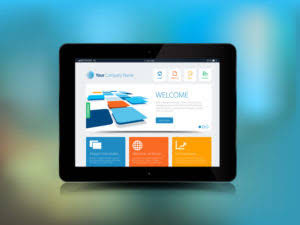
You can then use that picture to make decisions about your business’s future. It requires you to record each financial transaction just once in your overall bookkeeping record. This method can work for freelancers or sole proprietors with no more than one or two business transactions a month. It might feel daunting at first, but the sooner you get a handle on this important step, the sooner you’ll feel secure in your business’s finances. Remember that the basic goals of bookkeeping are to track your expenses and revenue and to ensure you collect all necessary information for tax filing.

Why is it important for small business owners to keep records?
- However, the accrual method is the required method for large corporations in the U.S., and besides that, it tends to provide you with a more accurate picture of your overall finances.
- Evaluate your budget carefully, but remember that investing in the right system now can save you money and headaches in the long run.
- Bookkeeping begins with setting up each necessary account so you can record transactions in the appropriate categories.
- Whether it’s daily, weekly, or monthly, keeping our records current is key.
- This includes letters or notices from tax authorities, correspondence with accountants or tax advisors, and records of any audits or examinations conducted on your business’s tax returns.
- Tax laws and regulations are constantly evolving, and staying informed is crucial for effective record-keeping.
In this blog, we will explore the significance of record-keeping for small business owners and share essential tips and insights to optimize this process. A small business can likely do all its own bookkeeping using accounting software. Many of the operations are automated in the software, making it easy to get accurate debits and credits entered.

Manual bookkeeping

You need coffee beans, milk, and cups readily available—but not so much that your backroom looks like a warehouse. Use this mileage log template to track business vehicle use and mileage Partnership Accounting costs. The template includes columns for travel dates and purpose, starting and ending points, odometer readings, and total miles. If you are using this sheet to reimburse employees, enter the reimbursement rate at the top of the template to determine the total amount owed. For related templates, including those for reconciling petty cash and general ledger accounts, see our collection of free reconciliation templates.

Monthly Bank Reconciliation Template
Real-time updates mean you’ll always know what’s available, what’s low, and what’s moving quickly. This synchronization eliminates guesswork and allows you to make data-driven decisions for payroll restocking and sales strategies. Regularly auditing your inventory ensures that your records match what’s physically on hand. Instead of performing a full inventory count only once a year, adopt cycle counting—a method where small portions of inventory are checked regularly. This keeps your data accurate without the disruption of large-scale counts and helps identify discrepancies early. Inventory management refers to tracking and managing your stock of goods, materials, or supplies.
- Discover 6 best practices for simple record keeping for the small business owner.
- You can look back, see patterns, and even draw comparisons with previous business years.
- Your reports will look different depending on which you decide to use.
- To calculate ROP, consider factors like lead time (how long it takes to receive an order) and average daily sales.
- Review revenue, expenses, and net income before and after taxes with this income statement template.
Small Business Bookkeeping (2024 Guide)
She brings practical experience as a business owner and insurance agent to her role as a small business writer. To understand the difference between these two methods, take this example. You ordered the parts in January, and the manufacturer sent you an invoice that same month. However, you don’t actually pay the fee until you’ve received the parts, in February. You may need to re-strategize and make adjustments to ensure you stay on top of your business. Before deciding to throw away any document, ensure its purpose is over, not only with the IRS but also with other stakeholders like creditors, lawyers, insurance companies, etc.
How long should businesses keep records?
- Their expertise can provide valuable insights, ensuring your records are accurate and compliant.
- With all your software linked through the cloud, payments that you make and receive can be automatically recorded to a digital ledger.
- Bookkeeping programs that incorporate graphs, charts, and other visual aids make it easier to increase data precision and improve communication when you’re wooing investors.
- Once the invoice has been presented, the amount of the sale is now owed to you.
Online accounting software can help you make sense of your financial reports, review your budget, record keeping for small business and prepare for taxes. Don’t forget to visit the QuickBooks bookkeeping hub where you can find additional helpful information and definitions. As a business owner, you’ll most likely have to create a complete financial report at least once a year, for tax purposes. However, there are plenty of reasons to make quarterly, or monthly financial statements as well. Frequent financial reports are a great way to check on your budget, and figure out where you can make adjustments if necessary. If your accounting software lets you securely upload receipts and other documents, you can attach files to the transactions themselves.